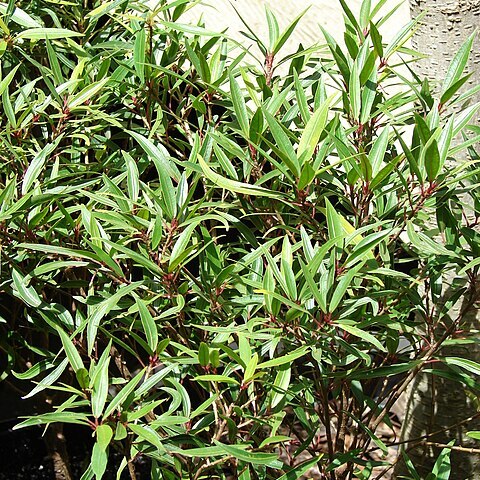Trees, to 15 m tall. Bark dark gray, smooth. Branchlets green to pale green, leaf traces and stipular scars conspicuous. Stipules lanceolate, glabrous. Petiole 1-4 cm; leaf blade elliptic, ovate, ovate-elliptic, or ovate-lanceolate, ± asymmetric, 8-18 × 3-6.5 cm, ± leathery, both surfaces glabrous and green, abaxially densely covered with cystoliths, adaxially smooth, base cuneate to rounded, margin entire, apex acuminate to caudate; basal lateral veins very short, secondary veins 7-15 on each side of midvein, and at about 90° to midvein, reticulate veins parallel to secondary veins. Figs axillary on leafy or older leafless branches, paired, narrowly cylindric, ovoid, ± globose, or globose, 8-10 cm in diam., carpodermis thick or thin and with or without stone cells, inside without bristles, apical pore navel-like, sessile; involucral bracts ovate, connate at base. Male flowers: many, pedicellate; calyx lobes 3 or 4, ovate-lanceolate; stamens 2 or 3. Gall flowers: few; ovary ovoid; style ± lateral, short. Female and gall flowers: calyx lobes 3 or 4; female flowers: ovary globose; style thin. Achenes smooth. Fl. and fr. Oct-Apr.
More
A fig. It is a small tree. It grows 15 m high. It has smooth greyish brown bark. The young branches are green. The leaves are alternate. They are 13-15 cm long by 3-6.5 cm wide. Leaves are oval or sword shaped. They taper to a long tip. There are 3 main veins and 8-12 pairs of side veins. The fruit are figs which are round but flattened. They are red when ripe.


